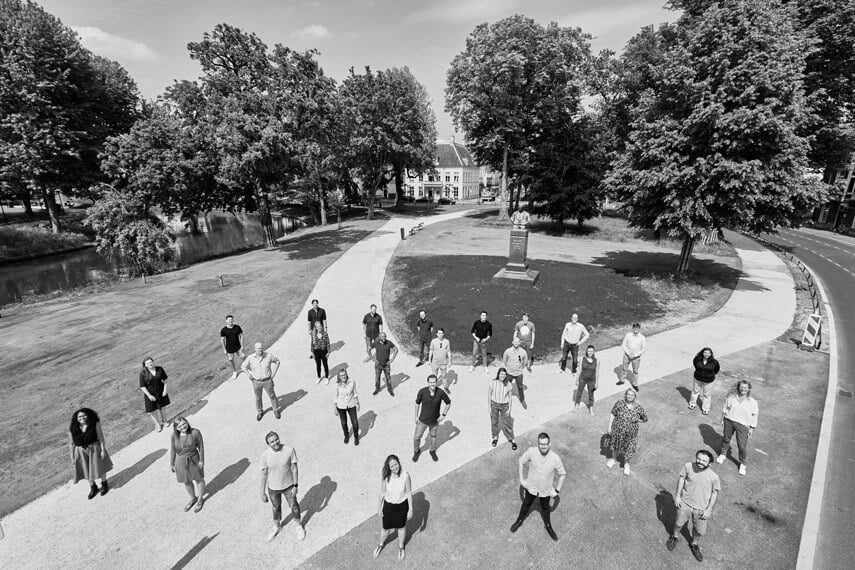UX design is a highly creative job. To produce the desired quality of output, your team of talented designers need a work environment where they can practice their profession freely without being bogged down by organizational quagmire and bureaucracy. They need a platform where they can collaborate with each other even when they’re working on separate projects. They need an atmosphere where they can exchange ideas, solve problems together, share knowledge, and support each other.
UX leadership plays a crucial role in bringing about organizational changes to create and sustain a thriving work environment for designers. As a UX team leader or UX manager, you have the vantage point to address the design challenges being faced by designers across projects.
It’s a given that you want your UX teams to perform excellently, and the products and services developed by your company to have a high-class UX design. Furthermore, it’s evident that you need to bring about several structural changes both within the team and outside to achieve your goal. Now, whether you’re a seasoned UX manager or someone new to UX leadership or a designer who has grown to assume a leadership role, you’ll need a set of skills to succeed.
We at Keen Design, with more than two decades of experience in UX, have curated a list of skills we consider essential for a UX leader.
Skill 1: Design thinking
Design thinking is a critical thinking process of finding innovative solutions based on bridging the needs of the business with the needs of the users. Addressing and harmonizing competing requirements are the centre of focus in design thinking. For example, when the business wants user to commit to subscribing to their service, but users are reluctant to trust the company. In design thinking sessions visual design and interaction designers can help facilitate solutions to foster trust with the user during the interactions with the company to make them more comfortable to understanding and subscribing to their services.
As a UX team leader, it’s important for you to adopt the principles of design thinking and foster the same among your team members. Include the principles of design thinking in developing UX design processes in your organization so that they’re a part of daily work.
Skill 2: Design Leadership
Just as any leadership role, UX leaders also require design leadership skills without which they can neither support their teams nor succeed in their goals. Here’s a real-life anecdote. When the CEO of a certain organization was shown some UX designs, he found them “boring” and introduced a racetrack in it because racing was his hobby and he thought it made the interface fun. Since the idea came from the CEO, and in absence of design leadership, the product UI ended up having an inappropriate racetrack, which users never understood and an important opportunity for a deeper conceptual design was lost and the product failed. But if the UX leader who presented the initial design had effectively supported their designs and presented coherent alternative designs to the CEO, the designers and users wouldn’t have needlessly suffered a poor design.
Skill 3: Empathy, Diplomacy and user centricity
As a UX leader, you should emphasize the fact UX is all about working with stakeholder (product and development, etc.) to create products and services for their end users. Ensure that your design team members are involved in the process of user research to understand their pain points and requirements. Only when your designers empathize with users, can they build UX designs that are readily accepted by users, and thereby also increasing product satisfaction. But that is not enough, it is equally important for the designer to empathize and understand the challenges of their fellow stakeholders. One leading UX designer claimed he did more diplomacy than design in his most successful products.
Skill 4: Strategic decision making
As someone in a leadership role in UX, you’re constantly called upon to make decisions; some with a smaller impact and some with overarching consequences. Your design thinking skills and user centricity play a vital role here. It’s important to have a high-level view of the situation and to listen to your stakeholders before making any decision. And ultimately, you should evaluate the impact of your decision on your design team. Consider for example that you’re a senior designer attending a design review of a medical application. The product lead argues that a certain design looks misleading. You think so to when you first see it. Bit since everyone has reviewed the application ahead of time in a design review you are able to back your designers. The designers, on the advice of another team said they should test the interface with users and did so. Then the tricky situation is clear and easy to support the designer: because the product lead is not the end user.
Skill 5: Team building and motivation
UX designers are usually spread across the organization working on different projects. It’s the responsibility of the UX leadership to bring them together to function as a team. The importance of collaboration among designers can’t be stressed enough. When your designers feel a sense of belonging to the team, they’re more likely to be motivated to perform well. Think of how they can collaborate in their daily work; provide opportunities for them to interact, to share knowledge and ideas, to support and challenge each other. It’s interesting to draw a parallel with traditional design studios used by architects to create sketches of building projects. You can create a digital environment for UX designers to work on their tasks and seamlessly collaborate with other designers. Keen Design has the perfect solution for it—the Design Studio.
Skill 6: Adaptability and innovation
UX design is a dynamic and creative field. User requirements and perceptions change, and your design teams should be agile enough to handle the changes. A UX leader should be able to guide the team in adapting to changes. When designers feel well supported by the leadership, they can shed their inhibition and produce innovative designs.
Skill 7: Mentorship and talent development
It’s extremely important for designers to know that they have opportunities to develop their talents and grow in the team. Stagnation and lack of clarity in developmental path lead to frustration and low morale. Identify the strengths of your individual team members and nurture them to grow into suitable roles. For example, if you have a designer who is good at conducting user interviews and understanding their requirements in depth, provide opportunities for him/her to grow as a researcher. Assign suitable mentors who can guide them on the path to grow. Identify members who can grow into leadership roles and mentor them.
If you found this glimpse of UX leadership interesting, you might want to dive deeper to explore how to build a high-performing UX design team.






